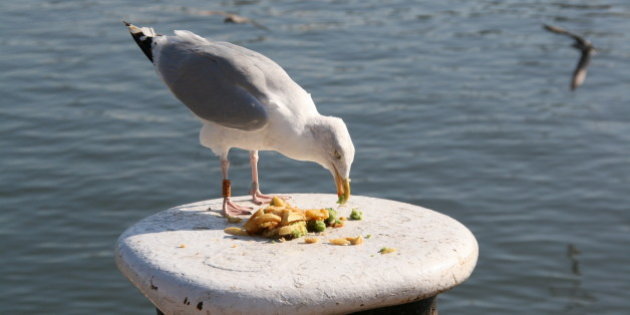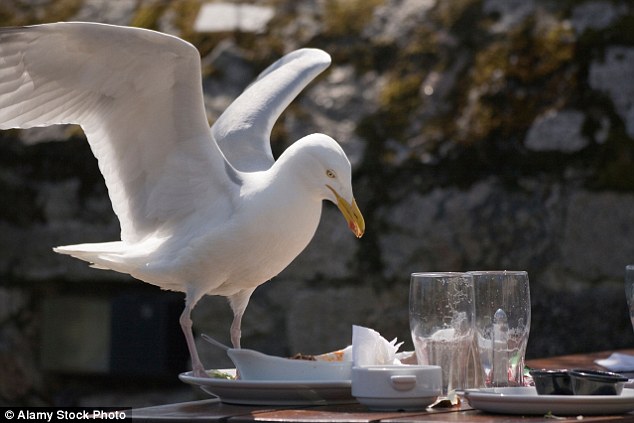Most Ontario residents are all too familiar with seagulls and their scavenging ways. Seagulls should predominately feed on aquatic life and carrion, but when they can’t find an adequate supply of food in their natural habitat, they will move to towns and cities in search of food scraps. Not only is fried fish and chips not a suitable diet for gulls, but once they have found a convenient source of food in an urban area, they can quickly become pests. But since seagulls are a protected species, your best course of action is to have a wildlife prevention expert to keep gulls away from your Bowmanville home.
A Misleading Name
Interestingly, there is actually no such species as a seagull and the name is a layman’s term that is used to refer to any of the species that belong to the family Laridae (meaning “ravenous sea bird” in Greek) or gulls. This can be misleading because many species of gulls live, feed, and nest inland. Gulls are relatively uniform in shape but do vary in size and colouration. They are known to be scavengers and are often seen in large, noisy flocks congregating wherever food is easily available. They can almost always be found around beaches, picnic grounds, parking lots and garbage dumps. Many people consider gulls to be a nuisance, but they actually perform a very valuable service as part of nature’s garbage disposal mechanism, scavenging and consuming great numbers of dead animals and organic litter which could pose a health risk to people.

Seagulls are a Protected Species
Seagulls are migratory birds and, while they can be found throughout the country, many will nest in environmentally sensitive coastal and lakeside areas with fragile ecosystems. Damage to these nesting sites caused the seagull population to drop to dangerously low levels. Which is why seagulls became a protected species.
They are now grouped with several other bird species that are protected by Canada’s Migratory Birds Convention Act and killing them is illegal. There are circumstances that allow for the culling of seagulls, but this requires special legal permission. The downside to the protection of seagulls is that they are becoming a nuisance in many populated areas and in order to protect the health and safety of residents, some municipalities are using non-lethal and, in extreme cases, lethal solutions to reduce the gull populations in areas where they are getting out of control.
Seagulls can Pose a Threat to People
Unfortunately, many subspecies of seagulls have become adept at living amongst humans, most notably Black-backed Gulls, and Herring gulls, and they are not only a nuisance, but they can also pose a serious health risk to people by spreading diseases. Gulls often gather their food from heavily polluted sources such as landfills, garbage dumps, and bins. This means that they spread harmful bacteria like salmonella and campylobacter and protozoa such as cryptosporidium and giardia, not just on beaches but throughout towns and cities. The bacteria, fungal agents and ectoparasites found in gull droppings can cause histoplasmosis, encephalitis, meningitis, toxoplasmosis and a host of other unpleasant diseases. During nesting season, gulls can also become extremely territorial, aggressively protecting their nests and even attacking people. They’ve also been known to be a real safety concern for airports as flocks of gulls often create hazardous conditions for low flying aircraft.
It is not just people that are at risk from seagulls, they can also cause extensive damage to your property. The uric acid in bird droppings is corrosive and the prolonged build-up of droppings can corrode paint and cause structural damage to buildings.
Bowmanville residents looking to keep seagulls away from their properties should call the wildlife prevention experts at Skedaddle. Our technicians will use humane strategies to ensure that seagulls stay clear of your home for years to come.



